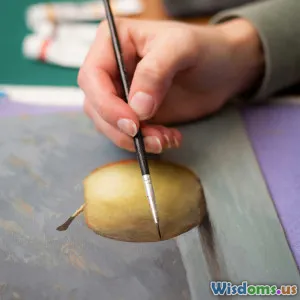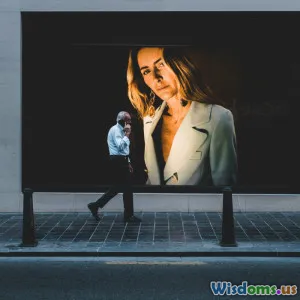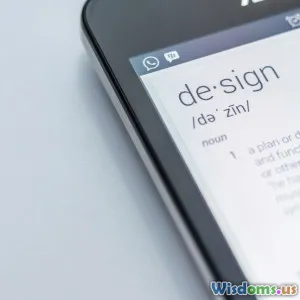
Five Powerful Concept Art Trends Shaping Games in 2024
8 min read Explore five groundbreaking concept art trends revolutionizing video game visuals and storytelling in 2024. (0 Reviews)
Five Powerful Concept Art Trends Shaping Games in 2024
In the dynamic realm of video game development, concept art continues to be the backbone of creating immersive and captivating experiences. As technology and audiences evolve, so do the techniques and thematic directions concept artists take to define the visual narrative of games. The year 2024 is witnessing several groundbreaking trends that are not only revolutionizing game aesthetics but also reshaping how stories are told and worlds are imagined.
This article dives deep into five powerful concept art trends that are setting the tone for video games this year. Whether you're a game developer, concept artist, or an enthusiast eager to peek behind the scenes, these trends offer insightful perspectives into the future of game artistry.
1. AI-Enhanced Concept Art Creation
Artificial Intelligence (AI) has swiftly become a valuable tool in graphic arts, and concept art for games is no exception. In 2024, AI-assisted design is emerging as a co-creative partner rather than just a tool.
How AI Is Impacting Concept Art
Artists leverage AI algorithms for generating mood boards, initial sketches, and even complex environments. For instance, game studios like Ubisoft and Epic Games have started integrating AI-powered platforms to speed up early visual brainstorming, which traditionally could take weeks.
An example includes AI-driven style transfer techniques where machine learning models reinterpret an artist's sketch with different historical art styles or genre aesthetics, enabling rapid exploration of visual diversity.
Balancing Automation and Human Creativity
Creative director Sarah Williams of a rising indie game revealed in a panel at GDC 2024: "AI gives us a broader palette, but it's the human touch that turns technology into art that resonates emotionally with players."
This coalescence of AI and artist expertise allows teams to iterate faster, reducing development cycles and maintaining distinctiveness despite AI’s generative power.
2. Hyper-Realistic Environmental Storytelling
The demand for immersive worlds requires environmental concept art that functions as a rich narrative tool. In 2024, hyper-realism is blending with nuanced storytelling to craft worlds that feel alive and consequential.
Depth Through Detail
Games such as Starfield exemplify environments layered with historical artifacts, weathered architecture, and ecological storytelling. Concept artists focus on microdetails — moss growth patterns showing passage of time or subtle weather effects influencing terrain textures.
Interactive Backstories Embedded in Environments
As per art director Marcus Lee, "Our environments aren't just backdrops; every crack on a wall or discarded object is a piece of a larger story waiting for the player to uncover."
This trend emphasizes the importance of environmental concept art in shaping the player’s journey rather than just visual spectacle.
3. Cross-Cultural Inspirations and Diversity in Aesthetics
2024 marks a crescendo in concept art embracing global cultures authentically to enrich game universes. Developers move beyond surface-level motifs to integrating deeper, respectful cultural narratives.
Genuine Representation and Collaboration
Games like Forspoken and Kena: Bridge of Spirits demonstrate how multicultural art teams collaborate with cultural consultants and historians to ensure accuracy and sensitivity.
Visual Synthesis of Styles
This trend leads to unique hybrid aesthetics combining, for example, African tribal art elements with futuristic cyberpunk environments or Mediterranean architectural influences blended into fantasy realms.
Such artistry broadens appeal and offers players diverse identities to connect with visually and emotionally.
4. Augmented Reality (AR) and Mixed Reality (MR) Concept Visualizations
Concept art has traditionally been a 2D or 3D medium viewed on flat screens. However, 2024 ushers in AR and MR tools allowing artists and developers to create and present concepts in spatial contexts.
Interactive Concept Exploration
With devices like Microsoft HoloLens 2 and advancements in AR glasses, concept teams can project environments and characters into physical spaces for real-time feedback and iteration.
Projects in pre-production phases, such as upcoming Halo Infinity expansions, utilize MR to simulate gameplay scale and player interaction with concept elements.
Enhanced Collaboration Across Teams
Distributed teams leverage shared mixed reality environments to collaborate regardless of geography, providing richer communication on design nuances.
This spatial approach also aids stakeholders and testers in grasping scale and immersion earlier in development.
5. Sustainability and Eco-conscious Design Themes
Reflecting broader societal concerns, concept art increasingly incorporates themes of environmentalism and sustainability within game worlds.
Visual Storytelling for Eco-awareness
Titles such as Horizon Forbidden West present devastated landscapes alongside regrowth and interspecies harmony. Artists create visuals emphasizing natural cycles, recycling of technology with organic forms integrated into machines.
Material Choices and Procedural Texturing
Concept teams partner with technical artists to develop textures and palettes inspired by real-world eco-friendly materials, such as biodegradable fabrics or reclaimed wood, enhancing authenticity.
Beyond aesthetics, some studios adopt sustainable workflows by minimizing energy-intensive rendering and digitizing sketches to reduce material waste.
Conclusion
The five trends highlighted demonstrate concept art's evolving role from pure illustration to a sophisticated, multidimensional craft integral in game development pipelines. AI tools augment human imagination, hyper-realistic environments deepen narrative immersion, cultural inclusivity broadens perspective, AR/MR innovations enhance conceptual interaction, and eco-conscious themes reflect global priorities.
For concept artists, staying informed and adaptive to these trends is critical not only to remain competitive but to contribute meaningfully to games that resonate with diverse audiences.
Game developers and studios harnessing these trends unlock new creative potentials and forge stronger emotional connections with players worldwide. As players, understanding these shifts enriches appreciation for the artistry behind our favorite games.
Embracing these powerful concept art trends shapes a vibrant, inclusive, and innovative future for video games in 2024 and beyond.
References:
- GDC 2024 Session Records, "Integrating AI in Game Art Creation"
- Ubisoft Annual Report 2024, Art and Technology Section
- Developer Interviews from Polygon: "Creating Cultural Depth in Games"
- Microsoft Hololens Developer Case Studies, 2024
- Environmental Themes in Modern Gaming, Journal of Game Studies, 2023
Rate the Post
User Reviews
Popular Posts




















